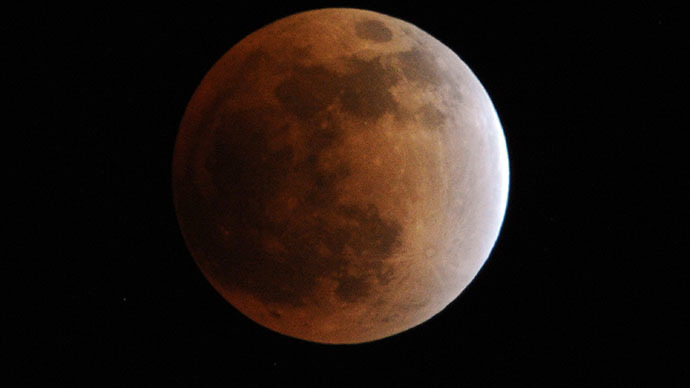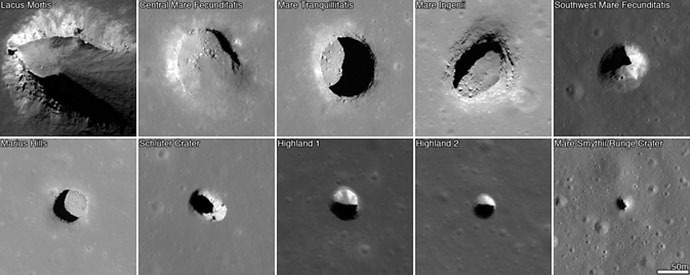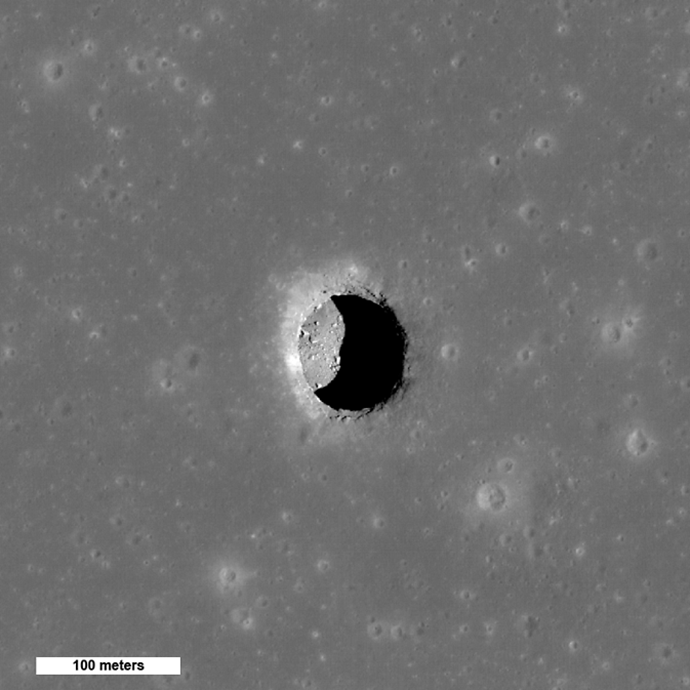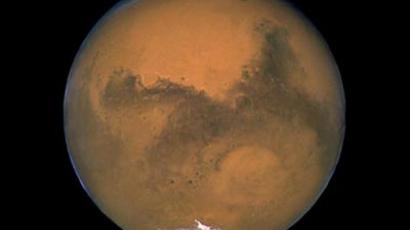200 Moon pits could accommodate future astronauts (VIDEO)

Scientists have found more than 200 pits on the Moon some of which might lead to caves that could potentially shelter astronauts protecting them from harsh temperatures, radiation and dust, according to a new NASA study.
Hundreds of pits that range from 5 meters across to 900 meters in diameter were found using a new computer algorithm that scanned thousands of high-resolution images of the lunar surface from Lunar Reconnaissance Orbiter’s (LRO) Narrow Angle Camera (NAC), the US space agency said in a press-release on Thursday.
The findings will help astronauts further explore the lunar surface, said Robert Wagner, the leading author of the paper on this research published online in the journal Icarus. Wagner is also the one who developed the computer algorithm to find these pits.
"Pits would be useful in a support role for human activity on the lunar surface," said Wagner of Arizona State University, Tempe, Arizona. "A habitat placed in a pit - ideally several dozen meters back under an overhang - would provide a very safe location for astronauts: no radiation, no micrometeorites, possibly very little dust, and no wild day-night temperature swings."
The pits were found in several locations on the lunar surface. The first were large craters with impact melt ponds. The team found 200 such pits spread across the melt ponds of 29 craters, which are considered by astronomers to be geologically young Copernican craters dated less than a billion years old.
The second is the lunar maria - or “sea” in Latin. Eight pits are situated there, three of which were previously known from images from the Japanese Kaguya orbiter.
The lunar maria represents dark areas on the moon which appeared as hundreds of kilometers of lava flows solidified and formed various patterns seen from Earth by naked eye. These patterns are interpreted differently by people, who see either a face of the man, a rabbit or a boy carrying a bundle of sticks on his back. In addition two more pits were identified in highlands terrain.
However, there is still little evidence how the voids formed based only on their appearance in the LRO photos, Wagner added.
The lunar caves could have been created as lava flowed in tubes under the solidified crust and then drained away, the same processes happen on our plant, Wagner added. Such caves could have formed in a large impact crater, the interior of which can take hundreds of thousands of years to cool, according to the scientist.

“They are likely due to melt flow within the pond from uplift after the surface has solidified, but before the interior has cooled," said the lead author of the paper. "Exploring impact melt pits would help determine the magnitude of this uplift, and the amount of melt flow after the pond is in place."
The exploration of maria pits could also reveal how the lunar maria was formed, the researcher noted.
“We've taken images from orbit looking at the walls of these pits, which show that they cut through dozens of layers, confirming that the maria formed from lots of thin flows, rather than a few big ones. Ground-level exploration could determine the ages of these layers, and might even find solar wind particles that were trapped in the lunar surface billions of years ago," said Wagner.
However, LRO has only imaged about 40 percent of the moon with appropriate lighting for this kind of research, said Wagner adding that there may be at least two to three more mare pits and several dozen to over a hundred more impact melt pits in unexplored areas. There could even be smaller pits already imaged that were missed by the research team.

“We'll continue scanning NAC images for pits as they come down from the spacecraft, but for about 25 percent of the moon's surface area (near the poles) the sun never rises high enough for our algorithm to work," said Wagner. "These areas will require an improved search algorithm, and even that may not work at very high latitudes, where even a human has trouble telling a pit from an impact crater."
To understand the process of formation of these pits and caves researchers plant to drop probes into one or two of these pits.
“Even a few pictures from ground-level would answer a lot of the outstanding questions about the nature of the voids that the pits collapsed into. We're currently in the very early design phases of a mission concept to do exactly this, exploring one of the largest maria pits."














